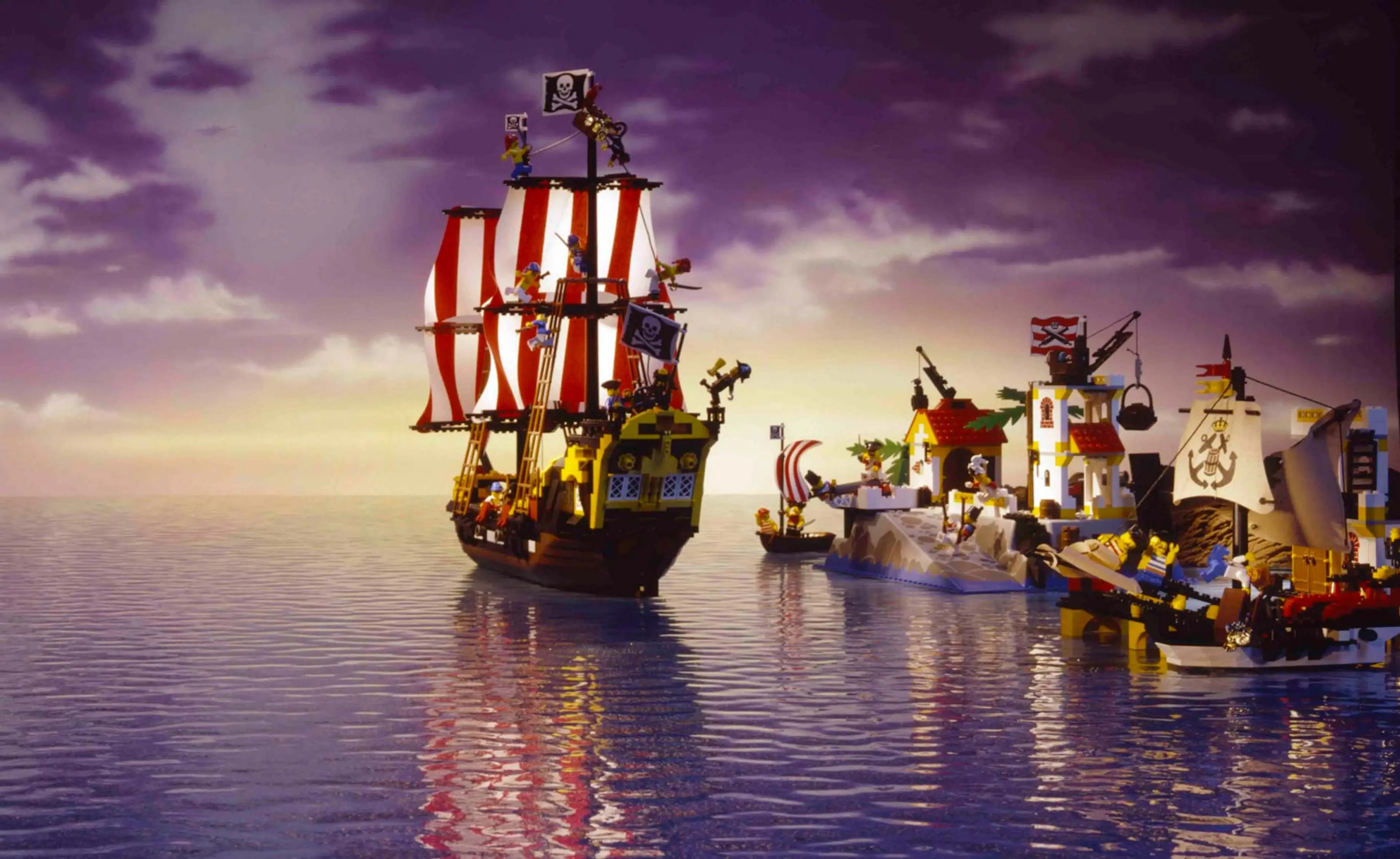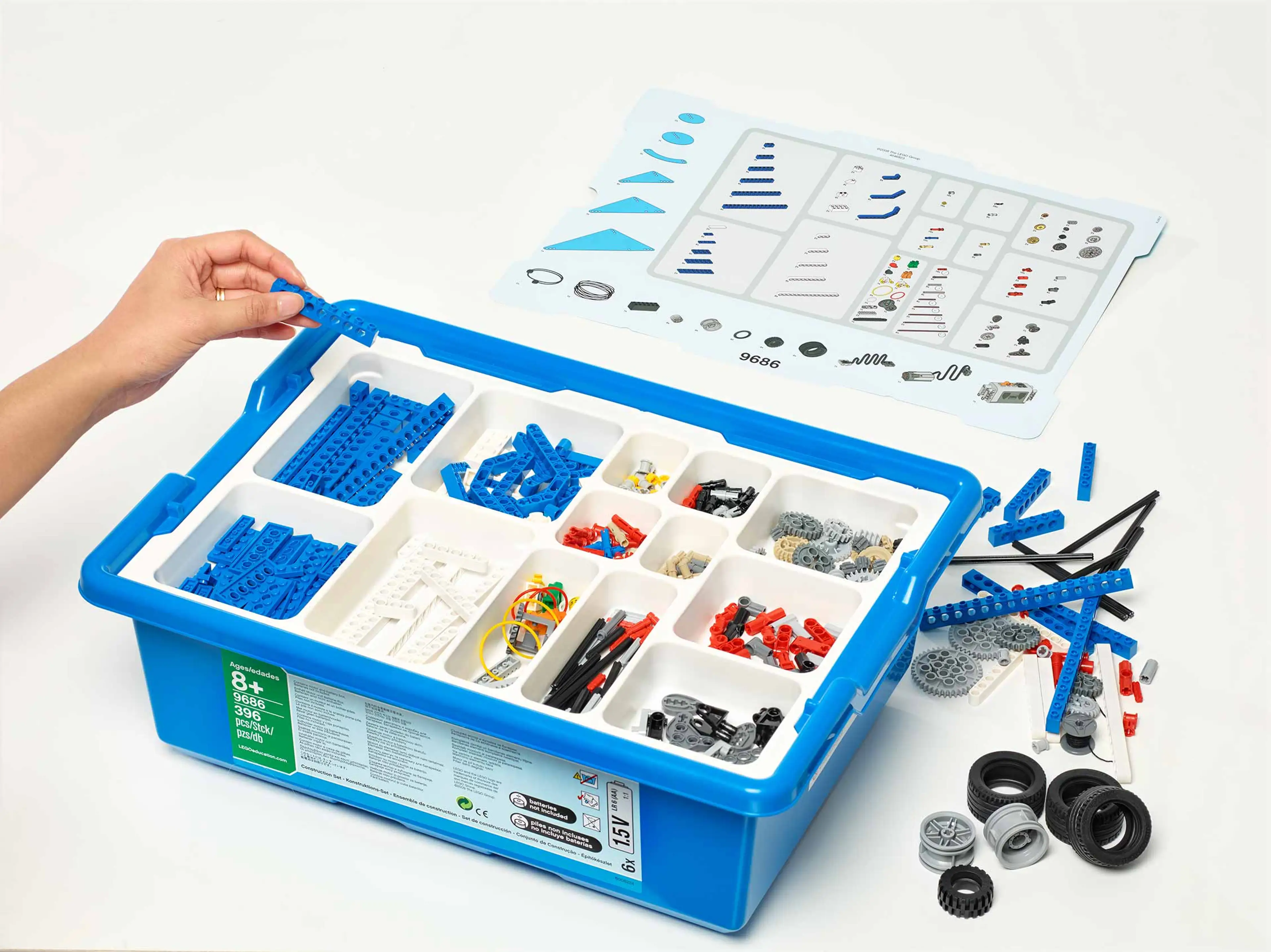The LEGO® Pirates theme (1989-1990 LEGOLAND® Pirates) is introduced in 1989. LEGO Pirates is one of the first themes to appear since the launch of LEGOLAND Town, Castle, Space and FABULAND® in the late 1970s. The LEGO Pirates theme becomes very popular with its focus on the classic idea of Caribbean pirates pitting their wits against soldiers of colonial empires and occasionally encountering indigenous people. A classic story of good and evil needs firearms. Flintlock pistols and muskets are introduced for the first time. So are LEGO minifigures with multiple facial expressions with scruffy beards and thick moustaches, a peg-leg and hook hand, though the smiling expression still holds sway for years. Specific elements for the construction of large sailing ship models are also introduced for the first time.
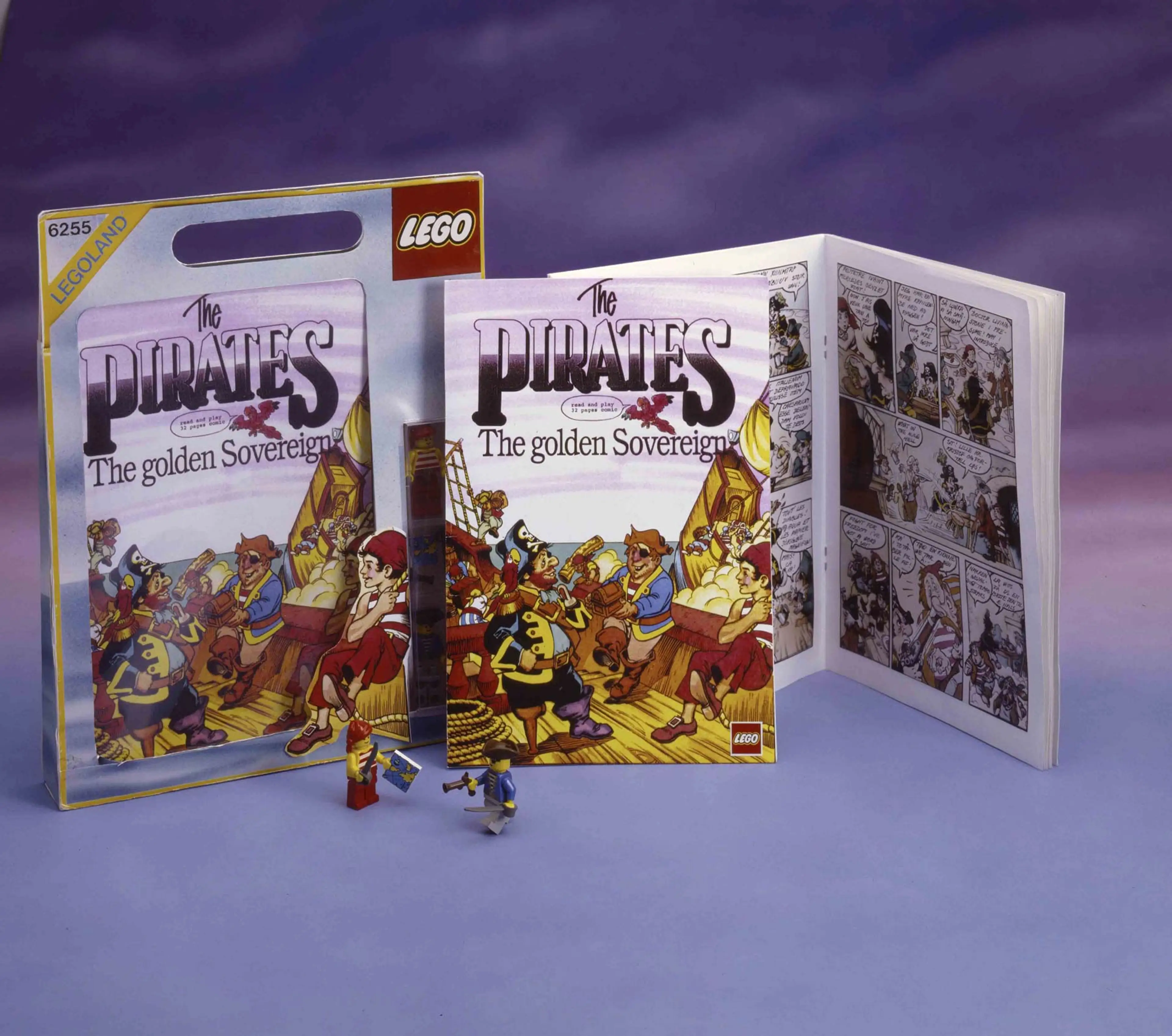
To boost the popularity of the theme and provide a background story for the main characters a comic book entitled ‘The Golden Medallion’ or, in some countries, ‘The Golden Sovereign’ is released in 1989
Good versus evil
The Pirates from 1989 have a flag with a skull and crossbones, the Jolly Roger, as their symbol. Alongside the Pirates are Governor Broadside’s blue-coated troops whose task it is to fight the Pirates. These forces are based upon the French navy and marines of the colonial era and are known as ‘Imperial Soldiers’ by fans, though they are explicitly identified as ‘Governors’ in some countries. From 1992-1993, the Governors are gradually replaced by red-coated Imperial Guards. Both the Governors and the Imperial Guards use two crossed cannons under a crown as their emblem. Kahuka is the leader of the Islanders, a Polynesian-based sub-theme released in 1994. The Islanders are considered neutral but are known to have pirate and imperial prisoners. In 1996, the Imperial Guards are replaced with the Imperial Armada with soldiers modeled on Spanish conquistadors of the 16th and 17th century.
The LEGO minifigure changes facial expressions
With the story of good and evil introduced in the Pirates theme in 1989 changes are made to the LEGO minifigure’s stereotype facial decoration. Designer Jens Nygaard Knudsen explains: “It was necessary to alter the minifigure’s expression in order to develop credible pirates, and a real pirate captain must have a patch on his eye, a peg leg and a hook!”. The minifigures are given a variety of different features including hair, eyepatches, beard and lipstick, and new leg and hand elements are introduced for the before mentioned hook and peg leg. Captain Roger, also known as Captain Redbeard, is the chief antagonist. He is the leader of the pirates and fights continuously against Governor Broadside’s soldiers. During the years of fighting, he has suffered three major injuries, which has caused him to wear an eye patch over his left eye, an iron hook where his left hand used to be and a wooden right leg. Additional trademarks of the captain are the skull and crossed bones on his bicorn (two-pointed hat), his distinctive gold-trimmed black frock coat and green scarf, and a colorful tropical parrot.
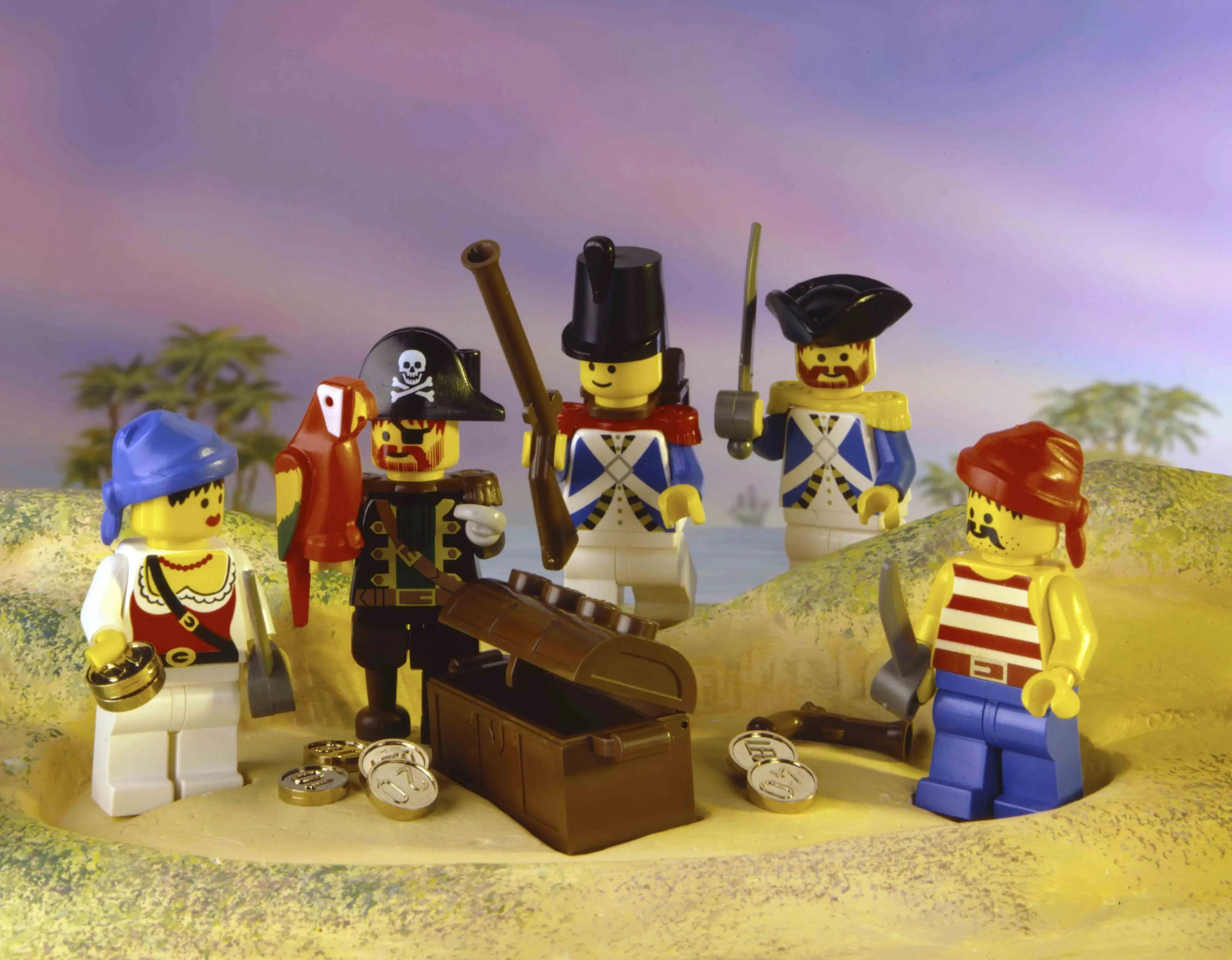
Set no. 6251 from 1989 depicting minifigures with many of the new features introduced with the pirate theme
Monkeys, sharks and skeletons
The Pirates theme also introduces sharks and the monkey figure with LEGO minifigure hands for clasping. In 1995, skeleton minifigures appear for the first time as they are introduced in LEGO Pirates and LEGO Castle sets. Introducing the skeleton has been a long process, as the LEGO Group before launching has been discussing for the previous decade whether to introduce a dead LEGO minifigure. As Designer Niels Milan Pedersen explains: “Originally the skeleton was designed a decade before it appeared in a set – but we were told off at the time for creating a dead minifigure!”.
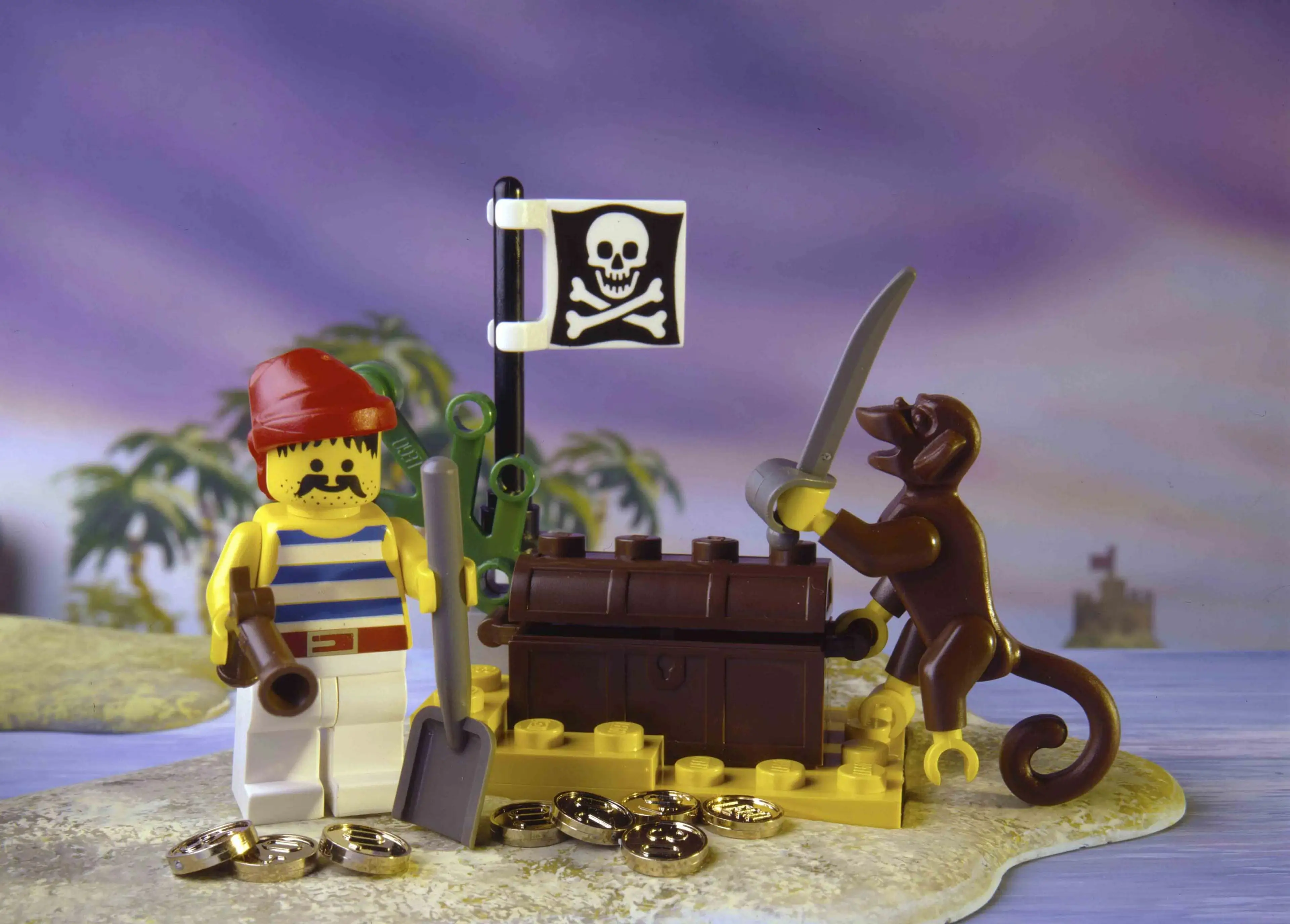
Set no. 6235 from 1989 is one of the first sets introducing the monkey figure
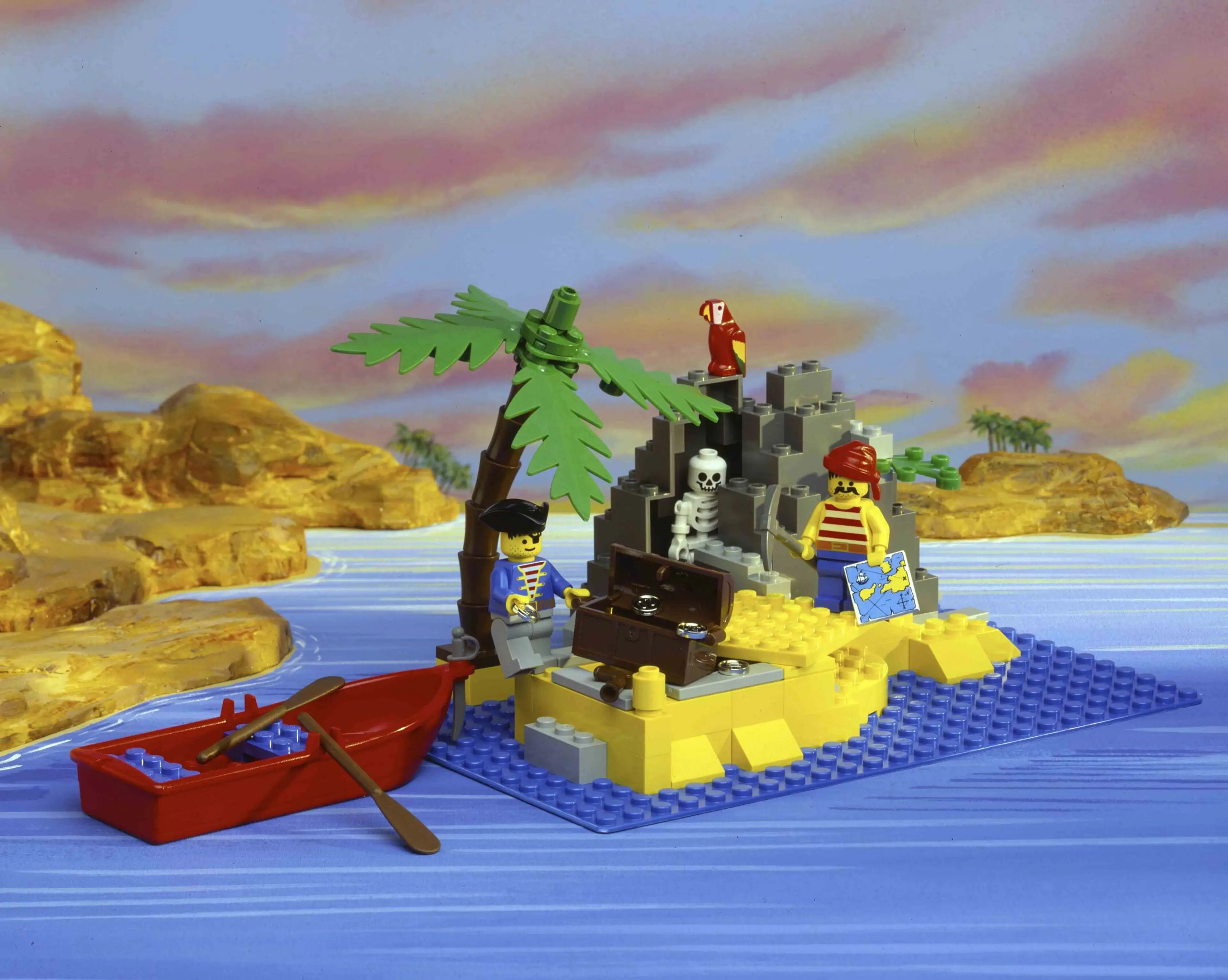
The skeleton is among others seen in set no. 6254 from 1995
Use of conflict and weapons
The LEGO Group believes that conflict between good and evil can form an important part of children’s play as it teaches children about their own, and other people’s, aggression and helps them recognize and handle disputes in other situations. However, the LEGO Group has no intention of glorifying war or encouraging violence, and therefore refuses to produce realistic weapons and military equipment with the risk of children recognizing these types of weapons from hostilities around the world. Instead, the LEGO Group supports children, stimulating their imagination by launching only historical and fantasy weapons. The Pirates theme is the first to feature firearms such as flintlock pistols, muskets and cannons. These historical weapons corresponds well to the mentioned guideline concerning conflict and weapons.
Relaunches
Two 1996 Pirate sets, "Red Beard Runner" and "Armada Flagship", and one 1994 Islanders set, "Enchanted Island", are re-released in 2001. The 1989 Pirates set "Black Seas Barracuda" is updated and re-released in 2002 for the LEGO Legends series. For the theme’s 20th anniversary in 2009 the Pirates theme reappears, combining the established look from the past with recent LEGO elements and building styles. The relaunch of the theme in 2009 ends in 2010 with the largest and most detailed pirate ship, the “Imperial Flagship”, a square-rigged, three-masted, 30-inch long (75cm) pirate-hunting juggernaut. In 2015, new sets are released once again with five new sets instantly familiar although reconfiguring the Pirates theme with fresh building challenges. In addition, a Pirates chess set is released.
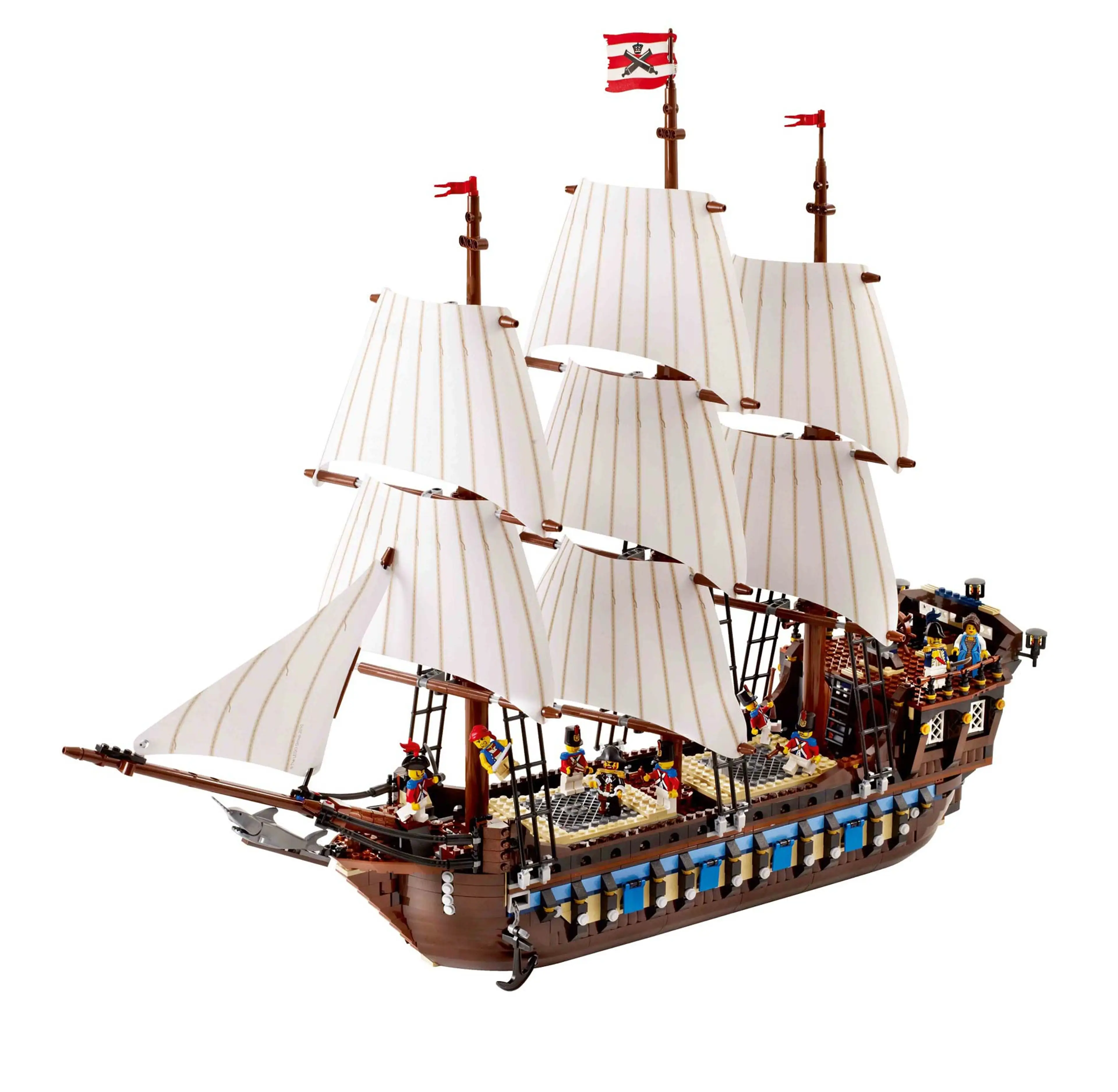
The Imperial Flagship, set no. 10210 from 2010
